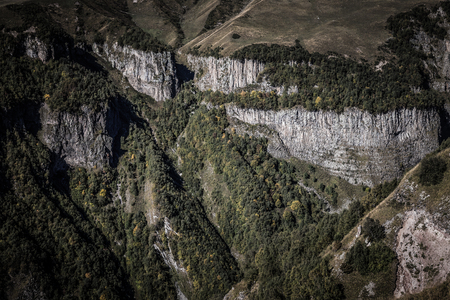Discovering Britains Natural Treasures
When it comes to exploring the great outdoors in the UK, the National Trust stands out as a cherished institution dedicated to preserving the country’s most precious landscapes and historic places. Established over 125 years ago, the National Trust cares for woodlands, coastlines, gardens, and stately homes, ensuring that generations of families can enjoy Britain’s natural and cultural heritage. For nature lovers and families seeking adventure, these conservation efforts offer more than just beautiful views—they provide a living classroom and a sanctuary for wildlife. From ancient forests to windswept moors, the Trust’s work helps safeguard unique habitats while making them accessible to everyone. Whether you’re taking your first steps on a woodland trail or revisiting a favourite beach, the National Trust is at the heart of connecting people with the beauty and history of British landscapes.
Favourite Conservation Walks Across the UK
If you’re eager to lace up your boots and discover the very best of British landscapes, the National Trust offers a wonderful array of conservation walks that showcase our country’s rich heritage and diverse habitats. Whether you fancy a bracing stroll along dramatic cliffs or a gentle wander through ancient woodlands, there’s something for everyone—families with young children, seasoned ramblers, or those simply wanting some fresh air at the weekend.
Scenic Walks from Coast to Countryside
The National Trust has carefully curated walking trails spanning every corner of the UK, ensuring that each route highlights unique natural beauty and important historical sites. To help you choose your next adventure, here’s a hand-picked selection of some of the most beloved conservation walks:
| Location | Walk Name | Main Features | Ideal For |
|---|---|---|---|
| Cornwall | South West Coast Path (Botallack to Levant) | Wild cliffs, tin mining heritage, sea views | Families, coastal lovers |
| Lake District | Sizergh Fell & Ancient Woodlands | Bluebell woods, wildlife spotting, castle grounds | Nature enthusiasts, bird watchers |
| Kent | Sissinghurst Castle Garden Walk | Formal gardens, orchard meadows, literary history | Garden lovers, relaxed walkers |
| Northern Ireland | Giant’s Causeway Clifftop Experience | Dramatic basalt columns, mythic stories, sea breeze | Adventurers, geology buffs |
A Walk for Every Season and Occasion
No matter where you live in the UK—or where your travels take you—you’ll find a National Trust walk suited to your mood and mobility. Many routes offer accessible paths suitable for prams and wheelchairs, while others challenge even experienced hikers with rugged terrain and spectacular vistas.
Why Choose a Conservation Walk?
Choosing a National Trust conservation walk means more than just enjoying beautiful scenery; it’s about supporting efforts to protect rare species, restore wild habitats, and preserve historical landmarks for generations to come. So gather your loved ones, pack a picnic or flask of tea, and set out to explore some of the nation’s finest walking routes—each one brimming with local character and natural wonder.
![]()
3. Spotting Wildlife and Embracing Natural Habitats
One of the greatest joys of joining a National Trust conservation walk is discovering the rich tapestry of wildlife that calls these precious landscapes home. As you meander through ancient woodlands, sprawling meadows, and rugged coastlines, keep your eyes peeled for native British species that bring our countryside to life. From the gentle rustle of hedgehogs in the undergrowth to the flash of a red squirrel’s tail high in the trees, every walk offers a chance to connect with nature’s wonders.
Tips for Spotting Native Species
Patience is key when it comes to wildlife watching. Early mornings or late afternoons tend to be the best times, as many animals are most active then. Listen for birdsong—robins, blackbirds, and skylarks are common companions—and look out for deer grazing at woodland edges or otters playing along riverbanks. In spring and summer, butterflies like the peacock or comma add a splash of colour to wildflower meadows, while autumn reveals fungi and busy squirrels gathering acorns.
What to Bring
Packing a pair of binoculars can help you spot more elusive creatures from a respectful distance. A simple field guidebook—many National Trust visitor centres offer these—makes identifying species fun for all ages. And don’t forget your camera to capture those magical moments, though always make sure not to disturb your subjects.
Advice on Responsible Observation
To ensure our wildlife thrives for generations to come, it’s important to observe responsibly. Stick to marked paths to avoid trampling sensitive habitats, keep dogs on leads where required, and never feed wild animals. Teach children to watch quietly and move slowly—nature rewards those who wait! Remember: leave no trace but footprints, and take only photographs.
Whether you’re an experienced birdwatcher or simply curious about what scurries beneath the hedgerows, every step on a National Trust walk brings new discoveries. Embrace the joy of quiet observation and you’ll soon feel more connected than ever to Britain’s natural heritage.
4. Family-Friendly Outdoor Adventures
Exploring National Trust conservation walks as a family is an opportunity to create cherished memories while nurturing a love for nature in little explorers. With thoughtfully designed routes and engaging activities, families can enjoy the great British outdoors together in a safe, welcoming environment. Many National Trust sites across the UK offer dedicated resources and features to ensure walks are both educational and exciting for children.
Activity Trails for Curious Minds
To spark curiosity and keep youngsters engaged, several conservation walks include themed activity trails. These often feature fun challenges such as wildlife spotting sheets, scavenger hunts, or interactive learning boards dotted along the route. Children can collect stamps or stickers at checkpoints, making each walk an adventure filled with discovery.
Top Family-Friendly Features at National Trust Sites
| Feature | Description | Example Sites |
|---|---|---|
| Activity Trails | Themed routes with games and learning stations | Wimpole Estate, Lyme Park |
| Picnic Spots | Designated areas for family picnics with scenic views | Dunham Massey, Attingham Park |
| Child-Friendly Facilities | Cafés with kids’ menus, accessible toilets, baby changing rooms | Kedleston Hall, Tyntesfield |
| Play Areas | Natural play spaces using logs, ropes, and mud kitchens | Cliveden, Gibside |
| Wildlife Watching Hides | Sheltered spots for observing birds and animals quietly | Minsmere, Sheringham Park |
Practical Tips for a Relaxed Family Day Out
- Plan Ahead: Check the National Trust website for family-specific events or downloadable activity packs before your visit.
- Pace Yourselves: Choose shorter routes suitable for younger legs and allow plenty of time for rests.
- Bring Essentials: Pack snacks, water bottles, hats or wellies depending on the season – British weather can be unpredictable!
- Make It Social: Invite friends or join one of the site’s ranger-led family walks for added fun and learning opportunities.
A Place to Connect and Play Together
The beauty of these conservation walks lies not just in their natural splendour but in their inclusivity—ensuring families with children of all ages feel welcome and catered for. Whether it’s clambering over wooden play equipment or watching butterflies flutter by during a picnic, National Trust sites are truly places where lifelong love for heritage and habitats begins.
5. Getting Involved: Supporting Conservation Efforts
If you’ve ever strolled through a wildflower meadow or admired the intricate stonework of a centuries-old manor on a National Trust walk, you’ll know just how precious these places are. Keeping Britain’s heritage and natural beauty thriving for future generations takes more than admiration—it needs community support. Thankfully, there are plenty of ways for nature lovers and families to get involved.
Become a Volunteer
Volunteering with the National Trust is a rewarding way to give back while learning new skills and meeting like-minded people. Whether you’re lending a hand with habitat restoration, helping out at visitor centres, or joining guided walks as a local expert, every bit of time makes a difference. Many families find volunteering together is not only fun but also a brilliant way to teach children about caring for the environment.
Join as a Member
Becoming a National Trust member opens the door to hundreds of special places across England, Wales, and Northern Ireland. Your membership supports vital conservation projects—from protecting ancient woodlands to restoring grand stately homes—while giving you unlimited access to explore them all year round. Plus, it’s fantastic value for families looking for days out filled with history and adventure.
Other Ways to Support
If regular volunteering isn’t quite right for you, there are still lots of ways to help. Donations, fundraising events, or even simply spreading the word about local National Trust walks all make a real impact. Some people choose to leave a legacy gift in their will—a lasting way to ensure Britain’s heritage continues to inspire for many years ahead.
Together for Future Generations
Every effort—big or small—helps safeguard our green spaces and historic treasures. By getting involved with the National Trust, you become part of a passionate community dedicated to keeping Britain beautiful and welcoming for everyone. Why not see how you can join in on your next conservation walk?
6. Practical Tips for a Memorable Visit
Before you lace up your walking boots and set off to explore the National Trust’s breathtaking conservation walks, a little planning will go a long way in making your day both enjoyable and stress-free. Here are some essential tips to ensure your adventure is memorable for all the right reasons.
Plan Ahead for Your Perfect Day Out
Start by choosing the right trail for your group’s abilities—many National Trust properties offer family-friendly routes as well as more challenging rambles. Check opening times, parking arrangements, and whether facilities like cafés or toilets are available at your chosen site. It’s always wise to consult the weather forecast and look up any special events or guided walks that might add extra interest to your visit.
What to Bring Along
Dressing for the British weather is key: think layers, waterproofs, and sturdy footwear. Don’t forget a refillable water bottle, snacks or a picnic (many sites have lovely spots for an alfresco lunch), and perhaps binoculars for wildlife spotting. If you’re walking with little ones, bring along nature-spotting sheets or field guides to keep them engaged.
Seasonal Highlights to Look Forward To
Each season brings its own charm. Spring carpets the woods with bluebells, summer meadows buzz with butterflies, autumn paints woodlands gold, and winter offers frosty tranquillity and crisp air. Check the National Trust website for seasonal highlights specific to each property—there may be blossom trails in spring or fungi walks in autumn that you won’t want to miss.
Respecting Countryside Codes
The UK’s countryside is precious, so following the Countryside Code is a must. Stick to marked paths, take litter home with you, keep dogs under control (especially near livestock), and leave gates as you find them. Remember—leave nothing but footprints and take nothing but photos. By respecting these guidelines, we help preserve these habitats for future generations of nature lovers.
With a bit of preparation and respect for both heritage and habitat, your National Trust walk can become a cherished family tradition—full of discovery, fresh air, and treasured memories.


